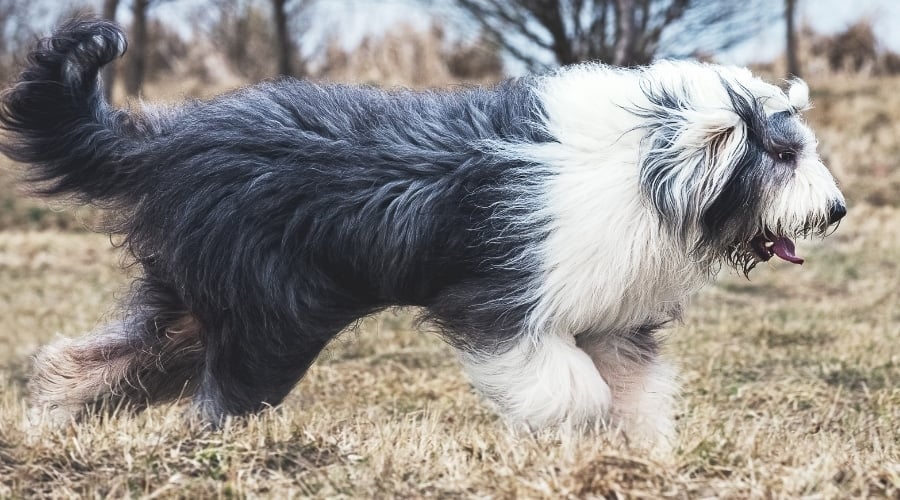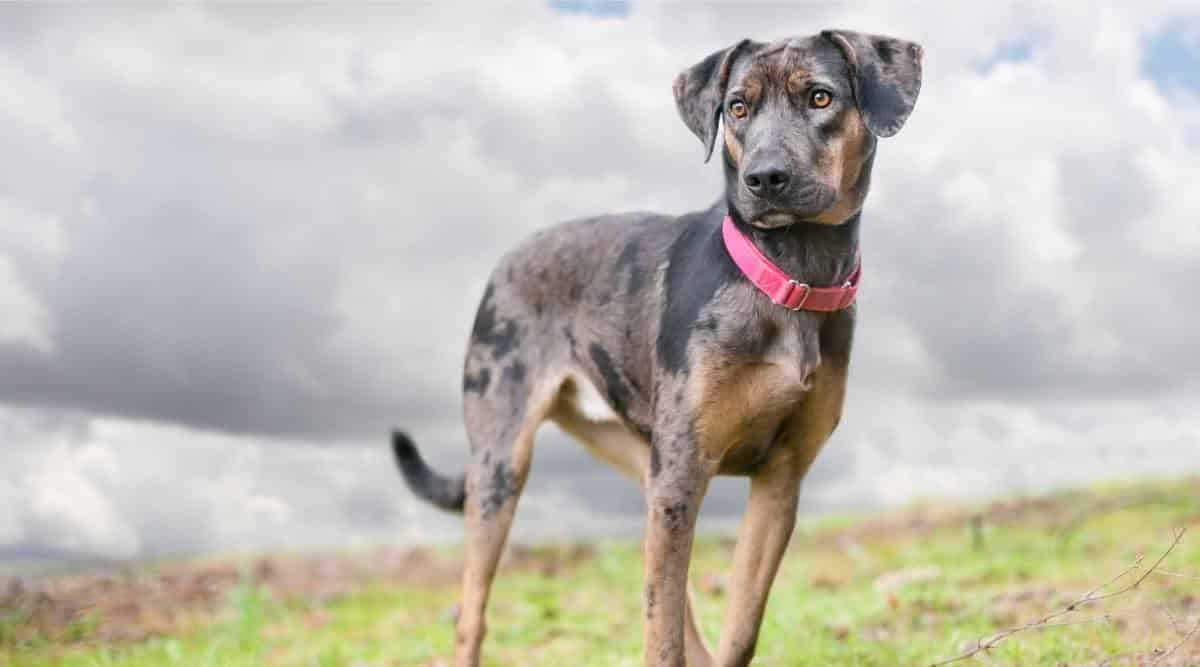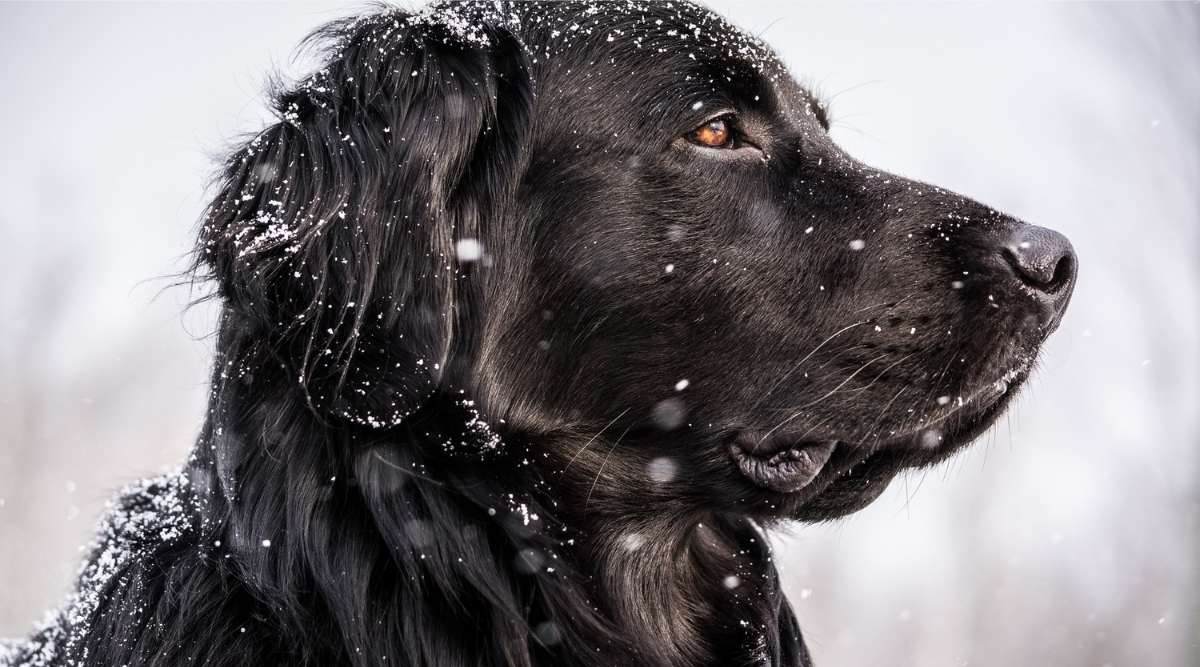Dachshund Labrador Retriever Mix: Dachsador Breed Overview
When you purchase through links on our site, we may earn a commission. Here’s how it works.
Designer dogs are becoming more popular these days, and one such ‘hybrid’; the Dachshund Lab Mix, sometimes known as the ‘Dachsador’ is one of those breeds.
Mixed breed dogs, often referred to as mutts or mongrels, can make wonderful pets. In recent years there has been a growing trend for mixing particular breeds, and these dogs are commonly referred to as ‘hybrid’ or ‘designer’ crosses. While these dogs are still a mixed breed and not a new particular breed of dog, as some people wrongly assume, these crosses can often result in adorable family pets.
Although these dogs can make excellent pets, it is crucial that, when considering this mix, you research where the puppies have come from and whether the traits of the breeds will be suited to your lifestyle. You should also remember that there are no guarantees in terms of characteristics or appearance, and your dog could inherit more traits from one of the breeds than the other.
Table of Contents
Breeding Process
As with all dogs, it is important that, if you are not adopting, you find a responsible breeder. This is all the more important with a mixed breed like a Dachsador.
The mother always has to be a Labrador Retriever. It would be cruel and potentially unsafe for mother and puppies if a Standard Dachshund mother was to try to birth pups that had come from a Labrador father. They would likely be too big, and this could cause complications during pregnancy or while trying to give birth. And, apart from anything else, given their size difference, it would be pretty challenging for them to mate naturally in the first place successfully!
This means that breeders will generally use artificial insemination with the sperm of the Dachshund father.
Appearance
The look of a Dachshund Lab Mix can vary significantly with each litter. It will depend on how much of their genetics come from their mother and father, respectively. Given that both breeds look incredibly different in the first place, this means that you could have a bit of a lottery with how the dog may turn out.
In general, though, the mix is usually a medium sized dog, landing somewhere in between the smaller size of the Standard Dachshund (often referred to as a Doxie or Weiner), and the large breed size of the Labrador.
While they may have a slightly squatter appearance than a Lab, the legs are usually longer than a standard Dachshund and this can be a positive thing as it means there will be less pressure on the spine. Dachshunds often have back problems because of their long backs and short legs.
The color variations of a Dachsador will also be myriad. Labradors have solid colored coats. These are most commonly yellow, black or chocolate (although they can be a deeper fox red color too). Dachshunds, on the other hand, come in a wide variety of color tones. They can be bi-colored, tri-colored and sometimes have dappled or brindle coats. This means, even within an individual litter, the colors could vary dramatically.
The coat type could also vary a lot too. Labs have a thick, short, double coat and the Doxie coat, again, is variable. They come in long-haired, wired-haired and smooth, single coat varieties.
The ears can also vary in size, Doxie ears are generally a bit longer and floppier than a Labs, so this could be another area that could look different from litter to litter.
Basically, every dog will likely look considerably and uniquely different, and this is especially true with the Dachshund Lab mix.
Personality Traits
Again, every dog is an individual, and no matter what breed you get, you can never be truly certain of what your dog’s character will be like. Much of a dog’s individual personality will also be determined by how they are raised. Early and ongoing socialization and training are essential to shape your dog into a well-rounded individual.
With a Dachsador, their personality will likely hold some attributes from both their Labrador and Dachshund parents, so it is useful to be aware of the main character traits associated with both breeds and then be prepared to have some of these mixed into your dog.
Dachshunds are often known for being confident, energetic, clever, tenacious and courageous. They tend to bond very deeply with their owners, but it also means that they can sometimes be overly protective of their family and territory. They can also be a highly vocal dog that loves to have their voice heard. Without proper guidance and training, these qualities can quickly escalate into problem behaviors.
They may resource guard their family and bark, snap or growl at strangers or other dogs. If your dog has inherited these traits, you should introduce training to reward your dog for more desired behavior instead. Ignoring it or punishing it can sometimes lead to an escalation of the behavior.
They are also a breed that was developed for their hunting skills. This does mean they can sometimes have a high prey drive when it comes to small furries and may not be suited to living alongside smaller pets, unless careful separation and supervision is in place.
Labrador Retrievers were also bred for use in hunting circles originally. Unlike the Doxie though, they were bred to retrieve game birds after they had been shot down. This means their skill is in their soft mouth and retrieving abilities. This has made them a popular dog for other types of mixed breed pups, like the Corgidor.
Labs are one of the most popular breeds in the United States and the United Kingdom. They are known for often making wonderful family pets. They tend to have gentle, affectionate personalities and they are eager to please and very smart; this is why they are often selected as service dogs. They are full of life and enjoy plenty of exercise and stimulation. They can be known as chewers and can be prone to separation anxiety if they do not get enough stimulation and company.
They are a very friendly breed, and they generally enjoy the company of people, including children, and dogs, and often even other animals too.
A Dachsador is likely then to be high energy and intelligent, and they are a dog that will enjoy having plenty of company. If they have more Doxie traits they may be a little more prone to guarding and being vocal and, if they have more Lab traits, they are likely to be a bit more laid back and widely sociable.
Training
Both breeds are known for their intelligence, so you will likely have a dog that will require lots of stimulation and enrichment, and they will benefit from overall regular training. If they inherit the stubbornness and tenacity of the Doxie, you may need to be a bit more patient and strategic with your training strategies. If they inherit more Lab traits, they will likely be extremely enthusiastic about any training that you do.
As with any dog; positive, reward-based training will create a stronger bond between you and your dog, and it has been scientifically proven to be more effective than using aversive, punitive methods.
Your dog may also be one that would enjoy taking part in canine sports. Labs are frequent competitors in agility and scent trials, and Doxies often do very well in competitive obedience.
Exercise
Both breeds are known for being energetic. Of course, the smaller Doxie will not need as much exercise as a Lab, but crossing the two may mean you still end up with a dog that will require a good level of daily exercise. Both breeds, but particularly Labs, are also prone to obesity, so making sure that they are kept trim and healthy will be of great importance.
Labs are often known as being water babies. Be prepared for having a dog that will want to dive into any water that they spot on their daily walks. The Dachshund Lab mix can inherit the Labrador energy with the stubbornness of the Doxie. Daily exercise will be beneficial for your pup, especially for keeping excess weight off.
Grooming
Both breeds are known to shed. Labs are excessive shedders, and if your dog has inherited this type of coat, then a good vacuum cleaner and an effective de-shedding tool will be a must. They will likely need regular brushing, especially when their coat has a blow out.
The Doxie also sheds, and the smooth coated variety sheds the most. For the long haired and wire haired type, the shedding is not as excessive. If your dog does inherit a slightly longer coat, then brushing to avoid tangles may also be a requirement too.
Other than this, general overall maintenance is all that will be required. If they enjoy getting in the water, then you should pay extra attention to their ear hygiene. Their ears should be dried out and cleaned if required to prevent yeast build-ups, which can lead to bacterial infections.
You should also ensure that their nails do not become overgrown. Often lots of road and pavement walking can file nails down naturally. If they become too long, however, this can impact on their gait and subsequently their joints, and they can also eventually curl back on themselves, cutting in the skin.
Health
Both breeds have several inheritable health conditions that they can be prone to. By selecting a responsible breeder that does appropriate health checks, you can minimize the risk of a condition developing. This will not completely eradicate the chance of a genetic health condition appearing however, and it is important to be aware of what these are.
For Doxies, the biggest problem they face is back related issues. Because of their long backs and short legs, they are more likely to develop spinal problems and injuries than many other breeds. Intervertebral Disc Disease is one of the biggest potential health problems Doxies face.
Of course, the benefit of mixing them with a Labrador means that the overall conformation of a Dachsador will hopefully reduce some of these risks. Care should still be taken when lifting them and when they are exercising; don’t encourage lots of high jumping etc.
They are also prone to diabetes, epilepsy and bloat (also known as gastric torsion). Bloat is often associated with deep-chested, slim breeds. A Dachshund Lab mix may not be as likely to develop this as their body shape will be different.
Labradors are most commonly associated with musculoskeletal conditions and problems with their joints. Along with hip and elbow dysplasia (which a good breeder will health screen the parents for), they are known for developing arthritis. Making sure they take a good supplement that contains glucosamine and fish oils may help, as could minimizing frequent and repetitive, high impact exercise.
Nutrition
As with any dog, it is important to feed a high quality and appropriately portion-controlled diet.
Both breeds are prone to obesity, so you must make sure you do not overfeed them and that they do not get too many unhealthy treats and snacks. Given their propensity towards back and joint problems, helping them to maintain a healthy weight is all the more critical.
The amount they will need to be fed may vary greatly, depending on the size of the individual dog. If you are unsure, always seek advice from your vet or a qualified canine nutritionist.
You could also consider using interactive treat toys to feed them some of their meals from. Not only is this a great way to provide extra enrichment, but it also takes your dog a lot longer to eat their meal. This can help to make them feel fuller and stops them from guzzling their food. This can be useful in terms of helping to minimize the risk of bloat too, which, as we explained earlier, the Doxie can be prone to.
Finding a Dachshund Lab Mix Puppy
As mentioned earlier, you should always take the time to look for a responsible breeder whenever you are considering buying a puppy.
Although there will be no registered AKC breeders for a Dachsador, you should make sure that the breeder has done appropriate health checks on the parents and you want to see mum and babies in a nurturing home environment together. The pups should all have had vet checks, and they should not be separated from mum until they are fully weaned and at least eight weeks old.
With the growing popularity of hybrid ‘designer’ breeds, this means that there are lots of opportunistic and unscrupulous backyard breeders and puppy mills that are taking advantage of this. The dogs in puppy mills usually live in horrendous conditions, are bred with no thought for health or temperament, and the puppies are often under socialized which can lead to problems when they arrive in their new home. They often come with a host of health problems too. Don’t support this industry; always do your research!
They are not a mix that is very likely to be found in a rescue center, although don’t forget there are lots of other wonderful mixed breed dogs waiting patiently to find their forever home in shelters up and down the country. Your perfect new addition to your family could be waiting there for you now!
Final Thoughts
While there is no guarantee on precisely what your Dachshund Lab Mix is going to turn out like in terms of looks or personality, you are likely going to end up with a very intelligent dog that will require a good amount of exercise and that will be very loyal and affectionate towards their owner. They are also a breed that will enjoy working, so they will need plenty of enrichment and will enjoy training.
Don’t forget to take the time to do your research, find a good breeder and put the time in with lots of appropriate early socialization and training. Your efforts will be so worth it.



